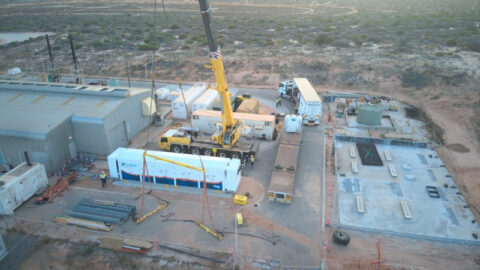The energy industry has responded to AEMO’s Draft 2022 Integrated System Plan (ISP), which describes the steps needed to transition the National Electricity Market (NEM) to a low emissions future.
The Australian Energy Council (AEC), which represents 20 major energy businesses, said the Draft ISP outlined the measures needed to transition the NEM to lower emissions, ensure reliability and keep down costs for customers.
AEC Chief Executive, Sarah McNamara, said, “AEMO’s scenarios show the profound disruption occurring in our grid as it transitions to a lower emissions profile.
“The Draft ISP particularly highlights the rapid decline of coal in our market. To adjust for this change, we must ensure there are sufficient dispatchable and sustainable resources in place that can operate for extended periods.
“It’s pleasing to note that three of AEMO’s four scenarios show electricity playing a large part in decarbonising the rest of the economy.
“Unfortunately, this almost all occurs after 2030. The AEC considers it could start this decade.
“Electrification is an immediate and obvious way to decarbonise, and the technology is readily and economically available; such as heat pumps and electric vehicles. We just need policies, initiatives and the will to see it happen.”
Chief Executive of the Clean Energy Council, Kane Thornton, said the Draft ISP called for a swift transition to renewable energy.
“Already we have seen the most ambitious, aggressive forecasts from the previous ISP becoming the base case,” Mr Thornton said.
“It’s happening now, and it’s happening fast. So, this is not about what we might achieve by 2050. The focus needs to be very much on what needs to be done this decade.
“Turning these projections into reality means governments around the country setting policies that deliver the scale of investment needed in renewable generation and storage, as well as transmission assets.
“AEMO has found that 10,000km of new transmission is needed to connect renewable generation to consumers.”
Projections within the Draft ISP also highlight the steep increase in demand on skills and supply chains from construction over the next few years.
“Competition for labour and materials, if not managed properly, can drive up the costs of projects and push out timing,” Mr Thornton said.
“Project sequencing to manage these risks will be important in maintaining regional community support.”
Hydro Tasmania also welcomed the release of the Draft ISP which identifies the Marinus Link as an “actionable project” with the potential to unlock Tasmania’s dispatchable energy capacity and long duration storage opportunities.
Acting Hydro Tasmania CEO, Ian Brooksbank, said that the new 1500MW Marinus Link interconnector is a critical enabler of the Battery of the Nation.
He welcomed the Australia Energy Market Operator’s recognition of Marinus Link as providing improved access to Tasmania’s dispatchable capacity (including deep storages) and high quality variable renewable energy opportunities, helping reduce the scale of investment needed on the mainland.
“Tasmania can provide cost-effective, dispatchable, highly flexible renewable energy, backed by long duration hydropower storage capacity,” Mr Brooksbank said.
“Together these projects will deliver benefits to Tasmania, including locking in our island’s energy security, giving Tasmanians the lowest possible power prices and delivering much needed jobs and economic investment to regional parts of the state.”
Mr Brooksbank said that the first 750MW Marinus Link cable will unlock flexibility in Tasmania’s existing hydropower portfolio to provide firming products to support a transitioning market.
Stakeholder consultation on the Draft 2022 ISP, including public forums and written submissions, will be open until 11 February 2022, after which AEMO will finalise the 2022 ISP by 30 June 2022.
















